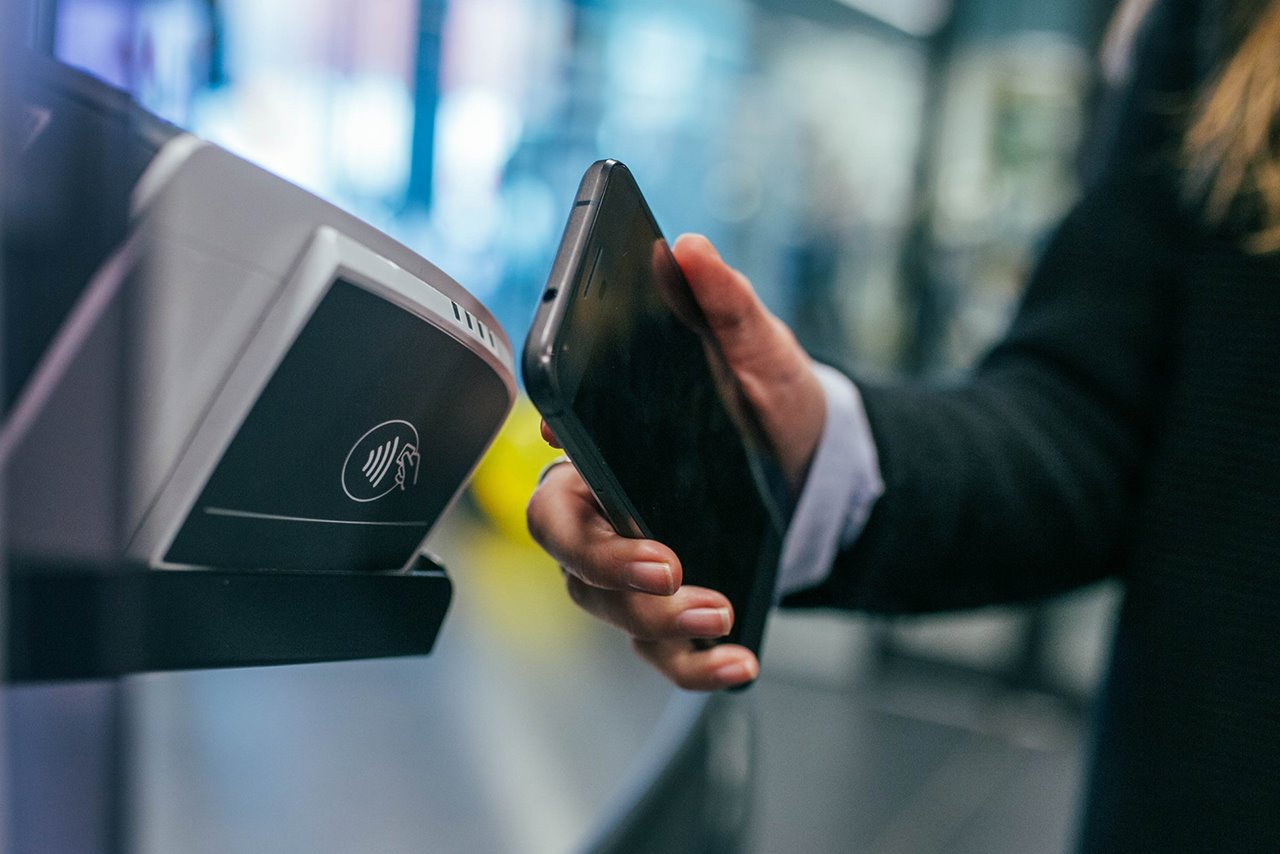
From touchscreen kiosks to self-checkout stations and apps, technology offers new ways for c-stores to eliminate lines.
Technology disruption has come for the checkout line. Convenience store retailers are adapting in a myriad of ways — like adding mobile payment, scan-and-pay apps, kiosk ordering and self-checkout stations — as they eye Amazon’s friction-less checkout for signs of where technology is headed.
When Amazon opened its first cashier less, checkout-free Amazon Go store in Seattle in 2018, retailers around the world took notice. Allowing customers to enter the store using an app, pay automatically and leave was intriguing. Would the process catch on — or even work?
In the three cities where Amazon Go has launched, it’s been met with both skeptical and excitement. But it demonstrates that consumers want greater options for payment and information. At supermarkets, self-checkout has become more prevalent. And at quick-serve restaurants, consumer spending increased 30% when using kiosks, according to Pymnts.
“In retail petroleum, both self-checkout and self-service kiosks have been in place for several years now,” said Jeremie Myhren, chief information officer at Road Ranger, which operates 40 stores in the Midwest and Texas. “Customers increasingly expect to have a self-service option, whether via a kiosk, self-checkout or within your app, and certain customer segments are going to increasingly demand from and reward those who provide full self-service options.”
And it’s not just self-checkout customers want, but the ability to find directions and information on whether products are in stock or available for delivery. Futurist Daniel Burrus said c-stores would do well to move beyond initial skepticism and investigate the options. “What if I could get anything I wanted at the c-store because they’ve got a kiosk, and if I walk up to that kiosk, I can order anything?” Burrus said.
Kiosks are easy to use, ease store congestion and can serve as a supplement to the store clerk. And they can expand based on offerings, demographics and customer need. Burrus mentioned smart vending machines as the next step after kiosks.
“By having a smart vending machine, you will have a store that encompasses almost any product that can be sold in a Walmart, a Kmart, a Sam’s Club or a Costco, and your customers can get it delivered that day, if you work out the right deal,” said Burrus. “So you can expand your inventory tremendously.” Without size restrictions and with costs coming down, the possibilities continue to expand.
“Self-service is moving from a large, expensive single-purpose kiosk footprint to a smaller, lower-cost footprint,” Myhren said. “Today’s new and best practice implementations range from mobile devices in the hands of associates to low-cost wall-mounted tablets, and away from any sort of physical implementation — by moving such functionality to your app.”
But to start, companies are introducing self-checkout, like Savannah, Ga.-based Parker’s did in its 54 stores last year, because it brings greater convenience and eases wait times. 7-Eleven recently introduced Scan & Pay, a self-checkout feature using the 7-Eleven mobile app and connected to its 7Rewards loyalty program. “Americans spend 37 billion hours waiting in lines, with a significant amount of that in checkout lines,” said Gurmeet Singh, chief digital officer and chief information officer at 7-Eleven. “The challenge I gave my team was, ‘How do we disrupt this?’ How do we make our shopping even more convenient and delightful?”
Because the shopping experience is integrated into 7-Eleven’s loyalty app, customers receive coupons and savings automatically. “They are also earning and redeeming rewards points seamlessly as they check out on their smartphones,” Singh said. The company rolled out a Scan & Pay pilot across the Dallas metroplex, with plans to expand further this year.
“We focused on building an end-to-end experience for our customers,” Singh said. “That meant integrating this feature with our 7-Rewards loyalty program, which is already integrated with in-store technology and includes special bags for customers to use, so they can easily shop and scan, as well as a patent-pending confirmation station that alerts the store that a customer paid and checked out.”
One fear about introducing kiosks and self-checkout is the potential effect on employment. But technology doesn’t have to replace employees; it can supplement and improve your workforce. “In addition to meeting modern customers’ expectations, when done successfully, you can better optimize and re-allocate your labour investment,” Myhren said. “At high-volume facilities that reach capacity, you can stretch the limits of the facility in ways that aren’t otherwise possible short of a raze and rebuild.”
Besides, the human element is still necessary. “It is a human world,” Burrus said. If three people are waiting at the checkout line, and another customer just has a question or needs to ask directions, they could get that answer from a chatbot — like Alexa — positioned in the c-store, Burrus noted. “I’m not saying we get rid of the human, I’m saying we serve our customers better because we have speed and service.”
Kiosks that provide information or scan items can free up workers and managers to focus on other areas of the c-store, like hot food and beverage cases. But the main focus of introducing kiosks and self-service machines is to assist customers.
“Customer-facing self-service tools are an important part of what should be your digital strategy and implementation,” Myhren said. “It also allows the same number of associates to serve a higher volume of customers in a higher quality way.”
“Many companies roll out self-checkout machines, but then they end up moving the line from the clerk to a line in front of the self-checkout machine,” Singh said. “We wanted to go for the fastest and best customer experience keeping in mind every customer is walking around with a ‘POS in their pockets’ — their smartphone.”